
What is Web3?
So, what is Web3? Web3 is the next phase of the internet. With new technology like blockchain and artificial intelligence, Web3 creates a decentralized universe where your data belongs to you, and everything you do online is part of a more secure, fair, and connected world. This evolution means a shift from the internet being in the hands of a few big companies to being powered by people like you.
Web3 heralds a new era in the evolution of the Internet, a phase in which websites and apps harness advanced technologies like machine learning, big data, and decentralized ledger technology (DLT) to process information in ways that resemble human cognitive abilities.
This impending web version, often termed the Semantic Web, is anticipated to foster a more interconnected, intelligent, and open digital realm.
Unlike its predecessors, it enables the sharing of information and the exchange of value directly, obviating the need for centralized authorities or mediators.
Web3 – Your Guide to the Next-Generation Internet
Emerging from the core of technological advancement, Web3, or simply Web3, beckons as the latest Internet evolution sensation primed to revolutionize our digital lives.
Beyond bits and bytes, Web3 embodies a decentralized internet. In this realm, users claim true ownership over their data and embark on interactions facilitated by blockchain and artificial intelligence (AI), challenging the centralized giants’ status quo.
Imagine a world where you don’t just browse content but participate in shaping the experiences therein—that’s the promise of Web3, where you hold the power to shape your digital destiny.
Enquiring about the nature of Web3 is increasingly relevant as we verge on a technological shift with significant implications. It is more than a mere progression; it symbolizes a profound transformation toward an era where decentralization becomes standard, not an aberration.
Blockchain technology stands out as a pivotal component within this future framework, paving the way for an online environment with amplified user autonomy—a stark contrast to the current model dominated by a handful of significant conglomerates controlling vast swathes of data.
Investigating the intricacies of Web3, we discover a user experience enriched by intelligent systems that can process and interpret extensive amounts of information with sharp precision.
This next iteration of the Internet transcends simple network connectivity, aiming to enhance individual empowerment on a scale previously unimagined.
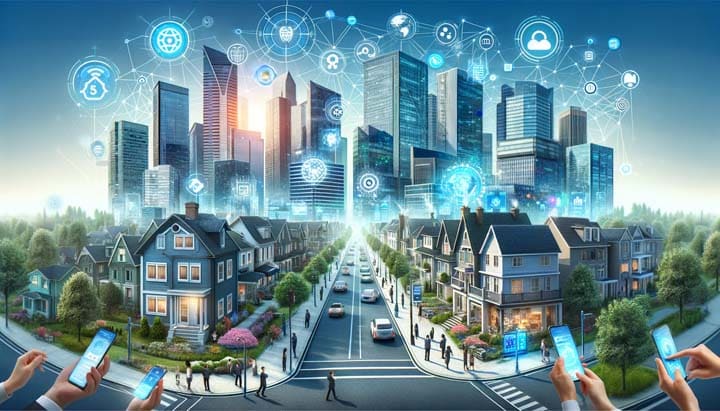
Understanding How Web3 Developments Impact Companies
Understanding the full implications of Web3 is critical, particularly regarding its influence on company transformations. With blockchain technology at the vanguard, we anticipate a notable change in how services are provided and transactions are conducted.
This advancement champions a shift towards decentralization, revolutionizing the way digital interactions are undertaken.
Firms are now challenged to adapt to an emerging digital environment where digital assets, smart contracts, and decentralized applications are becoming standard business offerings.
The advent of Web3 introduces substantial shifts in business models, and companies must respond astutely and with informed strategies to stay ahead in the competitive landscape.
At HWG, our role is pivotal in this shift—we occupy the crucial point at which this evolution unfolds. We dissect the complexities and offer strategic insights, ensuring that businesses are well-prepared to navigate the uncharted waters of this novel digital era.

Web 1.0 to Web3 How did we get here?
The exploration of the Internet’s evolution is a chronicle of remarkable breakthroughs.
The odyssey commenced with Web 1.0, a foundational network of static pages that paved the way for today’s vibrant digital world. The major limitation of Web 1.0 was its unidirectional flow of information, a weakness that ushered in Web 2.0 — an era characterized by interactivity and the predominance of user-generated content.
The transformation from Web 1.0 to Web 2.0 turned the Internet into a participatory and dynamic realm.
As we advance into Web3, we find ourselves at the cusp of a pivotal transition where the emphasis on decentralization and user empowerment takes center stage.
The Internet’s historical progression extends beyond mere technical advancements; it signifies a fundamental redistribution of power, reverting control to users.
Web3 heralds a future of enhanced personalization and security in the online experience and is poised to reconfigure corporate strategies within the digital market space.

Web 1.0: Where it all began
Looking back at the early days of the Internet, we find Web 1.0 serving as the inaugural framework for our now expansive digital cosmos.
This era is distinguished by its static web pages—a modest yet groundbreaking means for information distribution and the inception of our interlinked existence.
Despite their simplicity, these pages signified an unprecedented departure from traditional media and initiated the path toward digital advancement.
At the time, the web environment needed to be more extensive, offering essentially read-only content with scant opportunities for user engagement.
Nevertheless, the impact of Web 1.0 was profound, setting the foundation for future web developments that would be dynamic and interactive.
Revisiting the beginnings of the Internet is pivotal for appreciating the layered transformation that has occurred, leading up from Web 1.0 to the budding reality of Web3.
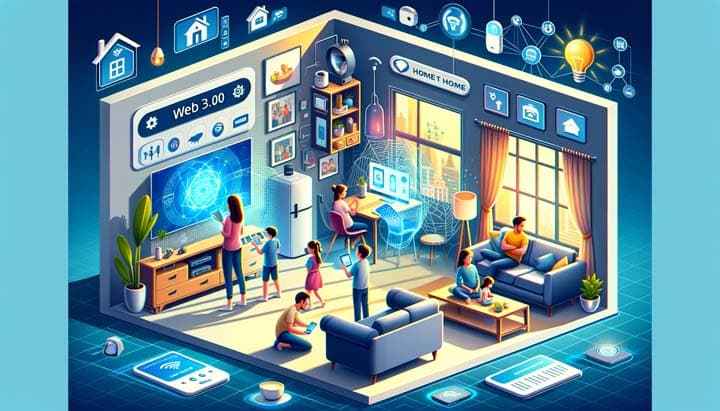
Web 2.0: A giant leap forward
The advent of Web 2.0 constitutes a pivotal leap in the Internet’s trajectory, reshaping it from a repository of static pages into an animated, interactive realm abundant with user-generated content.
This phase ushered in the golden age of social media, catapulting the Internet into a tool for global collaboration that nurtured communities and revolutionized our approach to sharing information.
The explosion of online services and apps during this era laid the groundwork for the subsequent phase of our digital journey — Web 3.0. A closer examination of Web 2.0 reveals its profound impact; it wasn’t merely a progression but a substantial leap forward that has set the stage for what’s to come next.
Web3: Natural Evolution of the Internet
Web3 encapsulates the progressive advancement of the Internet, shaping a future in which the digital landscape is characterized by heightened intelligence and unparalleled connectivity.
The development from the rudimentary Web 1.0, with its static content, to the interactive and socially-driven Web 2.0 has been a substantial leap, setting the groundwork for the latest iteration of the Web. With Web3, we explore the capabilities of the Semantic Web and the integration of decentralized frameworks that herald a significant change in our technological interactions.
This upcoming Web infrastructural paradigm promises to revolutionize privacy, ownership, and digital trust, fostering a network prioritizing users. This coming-of-age for the Internet suggests the emergence of a sophisticated ecosystem attuned to user needs, turning the page to a novel epoch in our digital progression.
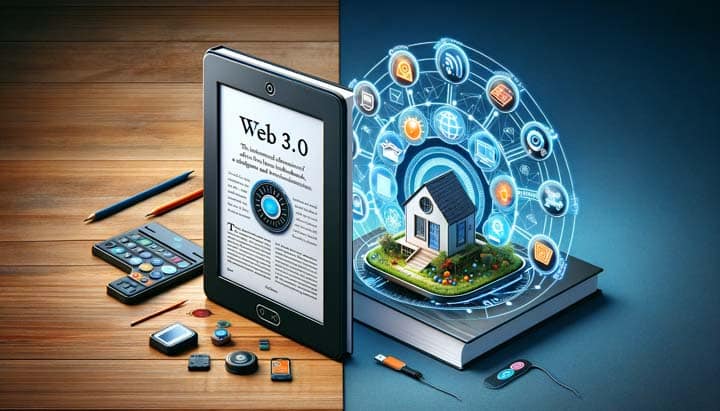
Key Features of Web3 That Will Redefine the Internet Experience
Web3 ushers us into an advanced digital epoch poised to redefine our online world through its defining characteristics. Central to this groundbreaking transformation is decentralization—a fundamental aspect of Web3—intended to reallocate power from traditional centralized entities directly to the users.
Leveraging blockchain technology, Web3 introduces a framework that enhances security and transparency, cultivating a climate of trust and greater user autonomy on the Internet.
Furthermore, the semantic web aspect of Web3 enhances interactions by allowing machines to process and understand information in a human-like context.
Collectively, these cutting-edge developments of Web3 aim to reshape our engagement with the online sphere, steering us towards a landscape that is exponentially more interconnected, intelligent and centered around the user experience.

Decentralization
Decentralization stands as the core principle of Web3, signaling a transformative redistribution of power set to alter how we engage with the network. This approach diverges sharply from the centralized nature of past web iterations.
By harnessing blockchain technology, Web3 ensures that users, not centralized institutions, hold control. Embracing a peer-to-peer model empowers user autonomy and bolsters individual command over personal data and digital properties.
Under the banner of decentralization, Web3 manifests a realm where trust is derived from consensus protocols instead of the authority of centralized organizations, carving out a space for more secure, transparent, and equitable exchanges on the Internet.

Blockchain and Cryptocurrencies
The cornerstone of Web3 is blockchain, a revolutionary technology transforming digital transaction practices. Blockchain operates as a decentralized public ledger, departing from the centralized data repository model prevalent during the Web 2.0 era.
This novel framework allows for the success of cryptocurrencies such as Bitcoin, facilitating a degree of security and transparency that was previously unattainable.
Supported by blockchain technology, cryptocurrencies introduce a fresh paradigm in digital finance — currencies that are not only international but also resistant to censorship and fraud.
Integrating blockchain and cryptocurrencies within Web3 heralds a shift toward a more democratic and just digital world, which inherently grants individuals power over online interactions through decentralization.
Smart Contracts
In the context of Web3’s potential for transformation, smart contracts stand out as a pivotal innovation.
These digital contracts encode the terms directly into code and operate on the blockchain network, enhancing security. Smart contracts execute automatically, obviating intermediaries and relying on the protocol’s neutral automation.
The self-sufficiency of intelligent contracts guarantees execution upon the satisfaction of preset conditions, eliminating concerns about downtime, censorship, fraud, or external influence.
This advance in technology not only improves security but also introduces a new level of efficiency to contractual transactions across diverse industries, leading us into an era where the unchangeable characteristics of blockchain back digital agreements.

Current Applications of Web3
Exploring the practical aspects of Web3 reveals that technology has transcended theory and is now actively reshaping our digital interactions.
Blockchain is at the forefront of this evolution, a foundational element of Web3 that has catalyzed a paradigm shift across various sectors by securing transparent transactions and effective data management.
Implementing services harnessing intelligent contracts has shown remarkable potential, streamlining and enforcing contractual obligations autonomously, thereby eliminating the need for central authorities to enhance trust and operational efficiency.
During these technological shifts, HWG has played an instrumental role by adopting and adapting these advances into tangible, innovative solutions.
The array of applications from Web3, such as decentralized finance (DeFi) and non-fungible tokens (NFTs), actively forge a more cohesive and user-centered online environment, indicating the route toward a highly interconnected internet experience.
Decentralized Finance (DeFi)
Central to Web3 is Decentralized Finance, or DeFi, a foundational shift towards a new model of financial services facilitated by blockchain technology.
DeFi distinguishes itself from traditional economic systems by circumventing centralized institutions, thereby creating a financial framework that is more open, accessible, and fair for all participants.
Leveraging the capabilities of cryptocurrency, individuals across the globe can now conduct economic activities such as obtaining loans and trading assets with an unparalleled degree of ease and fortified security.
With its integration into the fabric of Web3, DeFi ushers in an era where the transparency and permanence of blockchain act as sentinels for financial transactions, poised to revolutionize our conventional relationship with money.
As a cornerstone of Web3, DeFi is more than a fleeting trend; it represents a profound step forward, championing a financially democratic ecosystem for the future.
Non-Fungible Tokens (NFTs)
In the emergent Internet paradigm, non-fungible tokens (NFTs) exemplify Web3’s transformative capabilities. NFTs redefine digital art by marrying the digital with a tangible sense of proprietary rights through the blockchain.
This unique class of crypto-assets is reshaping the valuation of digital works, offering a level of uniqueness and guaranteed authenticity that blockchain immutability provides.
Each NFT is inherently singular with a verifiable digital identity, allowing collectors to take ownership and exchange digital artworks with the assurance traditionally reserved for tangible masterpieces.
On the comprehensive ledger that is the blockchain, the ownership records of these assets are maintained securely and clearly. This represents a significant reconfiguration of how artistic expression and asset transfer are conceived and performed within the digital space, further illustrating Web3’s impact on our interaction with creative content and property.
Supply Chain Management
Within the evolving context of Web3, supply chain management is witnessing a paradigm shift towards heightened transparency and traceability.
Utilizing the distributed architecture of blockchain technology, businesses are empowered to foster a secure, dependable framework for overseeing their supply lines. This adoption enhances logistics efficiency and reinforces the integrity of transactions and data throughout the supply chain network.
Incorporating decentralized systems in supply chain operations removes vulnerable central points of failure, bolstering business processes’ resilience.
By integrating blockchain technology, companies gain exceptional clarity within their supply chains, providing confidence that each phase of the product journey, from production to consumer, is authenticated and protected.
As Web3 evolves, the fusion of blockchain with supply chain mechanisms portends a future where industry norms for trustworthiness and operational efficacy are re-established.

Navigating the Complexities of Decentralization in Web3
In the shifting environment of Web3, the concept of decentralization is both foundational and complex. Exploring this advanced iteration of the Internet brings to light distinct issues related to its expansion, scalability, and performance.
While technologically impressive, the decentralized structures of Web3 introduce a maze of regulatory concerns to navigate as oversight transitions from central figures to wider, distributed networks.
The significance of security is amplified within this context as enhanced protective strategies become essential to defend this burgeoning digital realm. These elements combine, highlighting the obstacles that lie in the path of unlocking Web3’s full potential.
At HWG, our mission is to untangle these challenges, offering guidance through the intricacies inherent in the emergence of a decentralized digital age.
Scalability and Performance Issues
The expansion of Web3 introduces the critical challenge of scalability, often accompanied by daunting performance bottlenecks.
This forthcoming wave of the Web heralds a shift toward a decentralized framework, significantly propelled by blockchain.
However, this transition comes with its own set of difficulties. Existing blockchain networks can hit their growth ceilings in high-usage situations, potentially leading to protracted transaction times and escalated costs.
Addressing these performance concerns is highly important for developers and industry experts rigorously seeking scalable fixes to accommodate an increasingly populous user base.
This search represents a vital aspect of the ongoing Web3 narrative: ensuring the network’s robustness in bearing the growing demand without faltering so we may move smoothly towards an ever more sovereign and intelligent digital environment.
Regulatory and Security Concerns
The dawn of Web3 elevates regulatory and security issues to critical importance, necessitating a reimagined approach to legal frameworks and oversight.
With the integration of blockchain technology, adherence to compliance standards becomes particularly intricate, intersecting with the decentralized nature that defies conventional regulatory schemes.
Lawmakers face the challenge of crafting governance that shields consumers effectively while encouraging technological progress.
In the burgeoning context of Web3’s decentralized architecture, security issues become increasingly prominent, calling for technological enhancements to defend against the innate risks of emerging systems.
Scalability and Performance Issues
Navigating more plunging into the Web3 epoch, we are confronted by critical scalability and performance hurdles.
While decentralized systems—the cornerstone of Web3—offer promises of privacy and user empowerment, their capability to manage the intense demand of mass adoption is currently tested.
Efforts to reconcile the principles of decentralization with operational efficiency fuel continuous work among developers as they strive to resolve these obstacles.
In the quest to meet scalability demands, advancements in blockchain technology focus on enhancing transactional speed, cost-efficiency, and capacity.
Despite these advances, matching the established performance of centralized networks poses a formidable challenge, given the intricate and widespread configuration of decentralized systems.
Pursuing a fully scalable Web3 involves achieving technological feats that still need to be attained, underscoring the ongoing need for innovation and development.
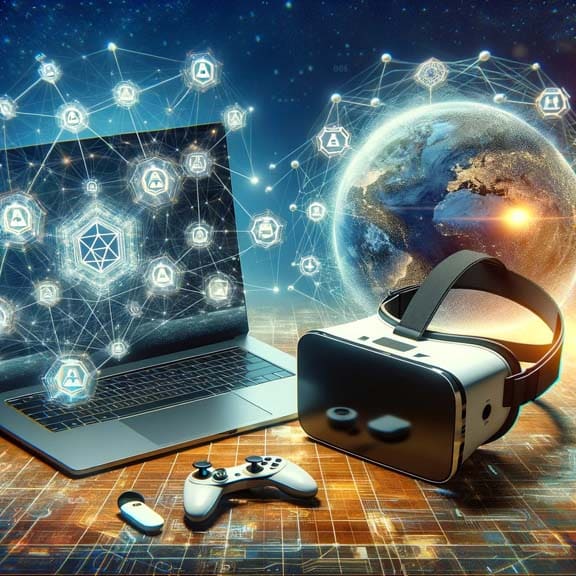
Web3 and AI: A Perfect Match?
Exploring the dynamic intersection of Web3 and AI, HWG uncovers a symbiotic relationship set to redefine the Internet’s future.
The power of artificial intelligence to parse vast amounts of data with speed underpins the realization of the Semantic Web. Web3’s essence, characterized by its connectivity and smartness, is markedly enhanced by the integration of AI.
Far from being a mere accessory, AI evolves into the core processing unit of the Semantic Web, not only processing data but also infusing it with meaning.
This alliance between AI and Web3 is poised to unlock new capabilities, ushering us into an age where digital interactions become more natural, business insights more profound, and opportunities more expansive.
The fusion of these technologies is reshaping the boundaries of our digital landscape.
Artificial Intelligence and Decentralize Environments
Integrating artificial intelligence (AI) and decentralized systems is foundational to the emerging Web3 architecture in the dynamic realm of the Internet.
AI’s capacity for learning and sophisticated technologies play a crucial role in refining user interactions to be more intuitive and seamless. In parallel, decentralization empowers users with unparalleled control and a novel sense of ownership over digital assets, thanks to blockchain technology.
This synergy forges a reinforced, secure, and adept ecosystem, with AI and blockchain amplifying each other’s capabilities.
AI’s analytical proficiency streamlines decentralized applications, enhancing their effectiveness, while blockchain lays the bedrock for AI’s ethical and transparent operation.
The union of AI and decentralization represents a stride toward an advanced web epoch where users hold sway over customization, innovation, and adaptability, encapsulating the spirit and vision of HWG.
AI-Driven Personalization in Web3
Delving into the Web3 era, the significance of AI in crafting personalized user experiences becomes increasingly apparent. A data-centric approach defines this era.
The semantic Web uses artificial intelligence to generate content that aligns with unique user preferences and behavior patterns. AI’s role in Web3 involves semantic data processing, enabling machines to grasp content with a level of understanding that mirrors human cognition.
The transition from static web pages to dynamic, customized user experiences encapsulates the sophisticated cognitive function of Web3, with AI-driven personalization ensuring that every digital exchange is as distinctive as its human counterpoint.
Consequently, the online environment transforms into an intelligent space, deeply integrated with AI’s subtleties and intellectual capabilities, offering a user experience that is not merely personalized but richly contextualized.

The Metaverse and Web3
The metaverse concept is a critical element of the Web3 framework, epitomizing the fusion of virtual reality, digital advancements, and the new Internet era.
As we delve into this all-encompassing realm, it becomes evident that it offers users an interactive, three-dimensional internet experience. Moving beyond the abstract, the Metaverse is rapidly gaining form, merging aspects of digital and physical existence into a unified, engaging platform.
This advancement is pivotal, poised to dramatically alter our conceptions of online connectivity and presence.
With the advancement of Web3, the Metaverse is transitioning from speculative fiction to a practical component of our everyday digital experience, heralding a future in which the boundaries between our virtual and real-world experiences grow increasingly blurred and intertwined.
The Role of Web3 in Building the Metaverse
The rise of Web3 is instrumental in shaping the Metaverse, providing the fundamental technology to support these burgeoning virtual environments. Utilizing blockchain technology, Web3 injects a dimension of trust and security into the digital sphere, granting users authentic ownership over their digital assets.
As we construct the Metaverse, the influence of Web3 grows ever more crucial. Its inherent decentralization paves the way for a democratic, user-centric virtual space.
Blockchain is a critical component within this new chapter, anchoring interoperability and contributing to fluid experiences across diverse platforms.
In creating the Metaverse under the Web3 banner, we are not merely constructing an isolated alternate realm but carving out a sophisticated digital ecosystem that champions seamless integration, immersive interactions, and ongoing innovation.
Economic Models in the Metaverse
As someone well-versed in technology and the history of the Web, I’ve witnessed the monumental changes in economic frameworks taking place within the Metaverse’s vast scope.
Here, transactions circumvent conventional financial systems, favoring the blockchain’s capabilities, streamlining trade, and authenticating ownership.
Cryptocurrency has become the circulatory system of these virtual economies, enabling swift and secure transactions that transcend geographical boundaries.
This emerging digital environment has produced a variety of digital assets, from virtual lands to in-game commodities, all holding real value in these captivating virtual settings. Blockchain typically underpins the utility and credibility of these assets, offering a reliable space where users can confidently invest, exchange, and engage.
As the Metaverse unfolds, it brings intricate economic structures destined to shape the essence of Web3’s economic landscape.

Web3, The Metaverse, and AI: A Recipe for Success
The convergence of Web3, the Metaverse, and artificial intelligence represents far more than technological progress; it heralds a synergistic transformation destined to reshape various sectors.
Web3 lays the structural groundwork with its decentralized nature, augmented by blockchain technology and cryptocurrencies. This foundation is further reinforced by smart contracts, which enable the creation of secure, transparent digital applications.
The Metaverse emerges as a vast digital expanse where these innovative technologies merge to offer a digital experience unlike before. Artificial intelligence stands at the intersection of this convergence, driving personalization and streamlining efficiencies as a critical enabler within this advanced internet iteration.
This triad promises significant victories for developers and industry practitioners. It marks a profound paradigm shift in user engagement within the digital world, indicating a potent revolution across industries.
Enhancing Metaverse Experiences with AI
Artificial intelligence is transforming the Metaverse, bolstering interactions and personalizing to create captivating virtual environments. The versatility of AI elevates metaverse experiences, allowing for distinctive, customized user pathways.
From the subtle intricacies of conversational AI that animate virtual assistants to intricate algorithms sculpting the virtual landscape, the level of personalization within the Metaverse is unparalleled.
As someone who has chronicled the evolution of the Web, I’ve seen the progression from static Web 1.0 to interactive, user-centered Web 2.0. Now, Web3 marks a new phase of growth where AI is deeply entwined with the Metaverse, enriching experiences both in scope and depth.
This ensures that every virtual world interaction is as layered and individualized as possible.
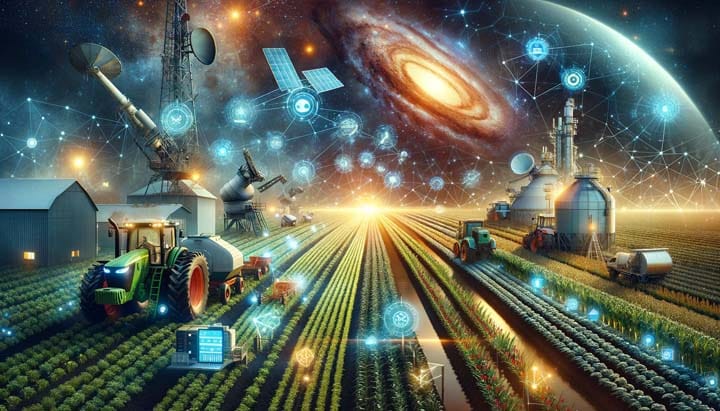
The Role of Companies in the Transition to Web3
In this transformative period for the Internet, corporations are at the forefront, propelling the shift to Web3 while highlighting the importance of solid tech integration.
Their strategies for adaptation are crucial, affecting the rate and effectiveness with which society moves towards a more sophisticated digital realm.
These organizations have a complex set of roles, encompassing investments in the infrastructure that underpins decentralization and nurturing technological advancements like blockchain and cryptocurrencies.
Corporations are not passive observers but key players actively influencing the application of intelligent contracts and seeking ways these innovative tools can provide a competitive edge.
Transitioning to Web3 represents not merely an upgrade but a radical transformation, and the degree to which companies embrace this technological progression will determine their positions within an interconnected, decentralized online ecosystem.
Web3: The New Era of the Internet for Users and Companies
The exploration of Web3 signifies a defining shift, heralding a seminal era for the Internet that affects both individual users and corporations.
This transformational wave is distinguished by its technological breakthroughs that revolutionize our engagement with digital spaces. Web3 introduces a decentralized format, empowering users like never before and creating a more transparent and just online environment.
Corporations are also crucial to this progression, leveraging the innovative capabilities of blockchain, cryptocurrencies, and smart contracts to pioneer new avenues beyond the scope of conventional business models.
The advent of this era represents more than incremental progress; it is a comprehensive reimagining of the Internet’s structure, driven by a fusion of technological advances and a commitment to user-focused values.
How Will the Companies of Today Adapt to the Web3 Revolution?
Navigating the Web3 revolution places companies at a pivotal crossroads — embracing a shift to a decentralized, more interconnected internet demands a transformative approach to their business models.
Adopting a comprehensive digital transformation strategy is vital in preparing organizations for what lies ahead.
For companies, the impetus is on welcoming the move to decentralization, employing blockchain and innovative contract technologies to foster innovation and streamline operations.
Adapting to Web3 transcends mere technical updates; it involves adopting an operational mindset in tune with the fundamental principles of this new era.
By doing so, companies exceed the role of passive onlookers and assume the role of creators within this evolving digital realm, navigating their businesses toward untapped prospects in a landscape increasingly shaped by Web3.
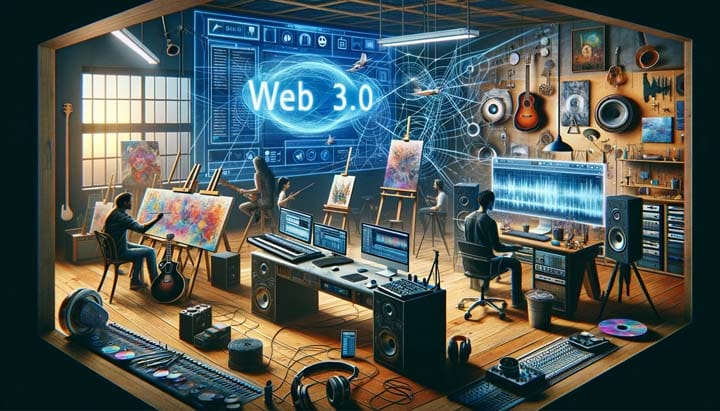
Opportunities for Early Web 3 Adopters
The foray into Web3 presents myriad advantages for those who are proactive and keen to carve out a competitive advantage in this emerging digital domain.
Innovators who venture into the realm of decentralization have the potential to secure a commanding position in the market. Investing early in Web3 opens pathways to creative business approaches and offers distinctive advantages beyond the conventional Internet’s capabilities.
By capitalizing on the capabilities of blockchain, cryptocurrencies, and smart contracts, visionaries can set new industry benchmarks and provide value in alignment with the principles of Web3. For these early adopters, the journey ahead is laden with promising prospects, offering the chance to revolutionize their enterprises and the broader digital landscape.
frequently Asked Questions
Q. What is Web3, and how does it differ from the previous web versions?
A. Web3 is the third internet generation focusing on decentralization and user empowerment. Unlike Web 1.0, which was made of static pages for information consumption, and Web 2.0, which introduced user interaction and content creation, Web3 integrates blockchain technology, AI, and peer-to-peer networking to ensure users retain control over their data and digital assets.
Q. What is Web3’s main benefit for average internet users?
A. The main benefit of Web3 for everyday users is the increased control over their personal data and online interactions. Web3’s decentralized nature aims to reduce large corporations’ grip on user data, giving users more privacy, security, and the ability to benefit directly from their online content and contributions.
Q. What is Web3’s role in data privacy and security
A. Web3 strengthens data privacy and security by utilizing blockchain technology, which stores data across a network of computers. This makes it challenging for hackers to compromise data. The inherent design of Web3 means that users have sovereignty over their data with transparent and consent-based data transactions, reducing the chances of misuse and unauthorized data collection
Q. What is Web3’s impact on digital currencies and transactions?
A. Web3 profoundly impacts digital currencies and transactions, leveraging blockchain to enable cryptocurrency dealings and smart contracts. It facilitates trustless transactions and the creation of decentralized financial services, offering alternatives to traditional banking and finance that are more accessible and less dependent on centralized authorities.
Q. What is Web3 technology, and how accessible is it to developers and businesses?
A. Web3 technology is a collection of innovations, including blockchain, decentralized finance (DeFi), non-fungible tokens (NFTs), the semantic web, and artificial intelligence. These technologies are becoming increasingly accessible to developers through open-source tools and frameworks that encourage experimentation and integration. For businesses, leveraging Web3 means adapting to a paradigm where the value is created and exchanged in new, decentralized ways, requiring a shift in digital strategies.

